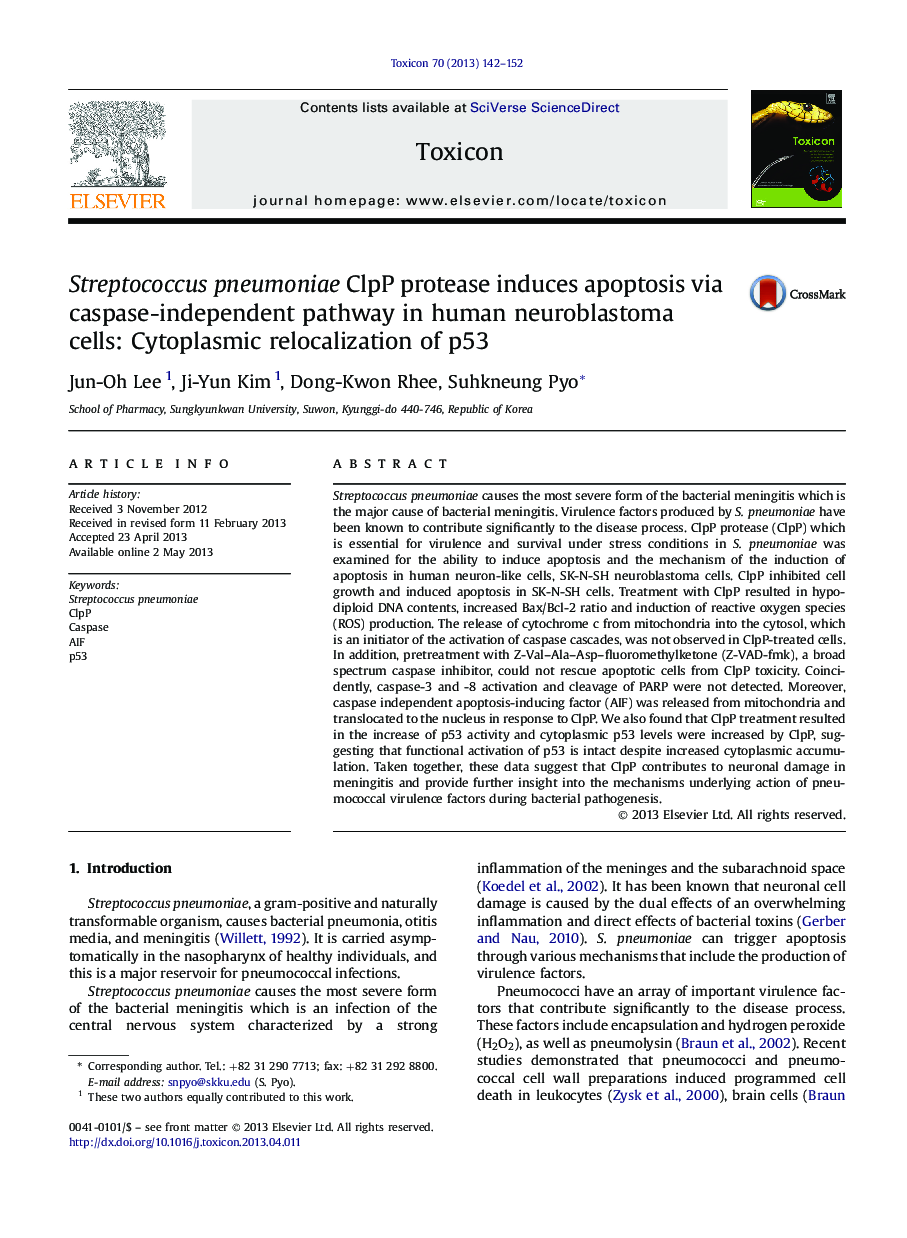| Article ID | Journal | Published Year | Pages | File Type |
|---|---|---|---|---|
| 8397665 | Toxicon | 2013 | 11 Pages |
Abstract
Streptococcus pneumoniae causes the most severe form of the bacterial meningitis which is the major cause of bacterial meningitis. Virulence factors produced by S. pneumoniae have been known to contribute significantly to the disease process. ClpP protease (ClpP) which is essential for virulence and survival under stress conditions in S. pneumoniae was examined for the ability to induce apoptosis and the mechanism of the induction of apoptosis in human neuron-like cells, SK-N-SH neuroblastoma cells. ClpP inhibited cell growth and induced apoptosis in SK-N-SH cells. Treatment with ClpP resulted in hypodiploid DNA contents, increased Bax/Bcl-2 ratio and induction of reactive oxygen species (ROS) production. The release of cytochrome c from mitochondria into the cytosol, which is an initiator of the activation of caspase cascades, was not observed in ClpP-treated cells. In addition, pretreatment with Z-Val-Ala-Asp-fluoromethylketone (Z-VAD-fmk), a broad spectrum caspase inhibitor, could not rescue apoptotic cells from ClpP toxicity. Coincidently, caspase-3 and -8 activation and cleavage of PARP were not detected. Moreover, caspase independent apoptosis-inducing factor (AIF) was released from mitochondria and translocated to the nucleus in response to ClpP. We also found that ClpP treatment resulted in the increase of p53 activity and cytoplasmic p53 levels were increased by ClpP, suggesting that functional activation of p53 is intact despite increased cytoplasmic accumulation. Taken together, these data suggest that ClpP contributes to neuronal damage in meningitis and provide further insight into the mechanisms underlying action of pneumococcal virulence factors during bacterial pathogenesis.
Related Topics
Life Sciences
Biochemistry, Genetics and Molecular Biology
Biochemistry, Genetics and Molecular Biology (General)
Authors
Jun-Oh Lee, Ji-Yun Kim, Dong-Kwon Rhee, Suhkneung Pyo,
